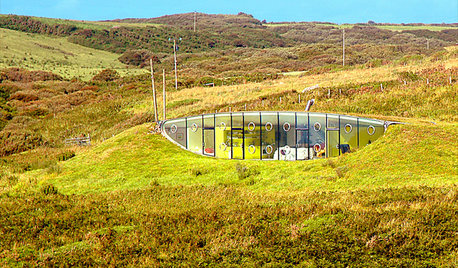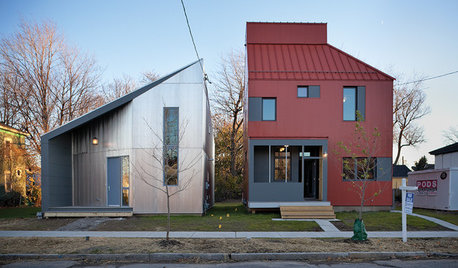Adding a ground to 6 3 awg
lthandy
15 years ago
Related Stories

LANDSCAPE DESIGNSo Long, Lawn: 6 Walkable Ground Covers to Consider
These trample-proof, low-water plants can lower your water bill while greening up your garden
Full Story
GROUND COVERSGround Force: 10 Top Ground Covers for Your Garden
Protect your soil from weeds and drought this summer with a living mulch of ground covers
Full Story
LIGHTINGThe Pros and Cons of Recessed Lighting
A lighting designer shares three things recessed lights do well and three things to watch out for
Full Story
DECLUTTERING6 More Clutter-Busting Home Habits to Adopt This Year
Be decisive, don’t use the garage as your dumping ground and do rethink that sweater you never wear
Full Story
ARCHITECTURE6 Amazing Homes Dug Into the Earth
Designed to disappear or with portions peeking out, these houses bring a new meaning to 'communing with nature'
Full Story
GARDENING GUIDES6 Branches and Berries to Spruce Up Holiday Decor
Bring garden cuttings in from the cold to warm up seasonal arrangements and decorate your home for the holidays
Full Story
GARDENING GUIDES6 Steps to Get a Garden Off to a Glowing Start
Grow a lush, balanced garden from an empty patch of yard or neglected landscape spot with these easy-to-follow guidelines
Full Story
EVENTS6 Standout Design Trends at the Las Vegas Summer Market
Heavy metal accents, winter white upholstery, pleated looks and faux shagreen show up in featured products
Full Story
GARDENING GUIDESGreat Garden Combo: 3 Soft-Looking Plants for a Dry Climate
Weave a romantic tapestry with this drought-tolerant combination of plants as tough as they are lovely
Full Story
ARCHITECTUREEnergy-Saving Ideas From 3 Affordable Green-Built Houses
Get lessons in budget-friendly green building from design competition winners in New York state
Full Story







joed
petey_racer
Related Professionals
Bryn Mawr-Skyway General Contractors · Glenn Dale General Contractors · Jericho General Contractors · Perrysburg General Contractors · Rancho Santa Margarita General Contractors · University Park General Contractors · Vincennes General Contractors · Fish Hawk Handyman · Riverside Solar Energy Systems · Flower Mound Home Automation & Home Media · Greenville Home Automation & Home Media · Newark Home Automation & Home Media · San Pablo Home Automation & Home Media · Springville Home Automation & Home Media · Tamiami Home Automation & Home MedialthandyOriginal Author
jmvd20
lthandyOriginal Author
papi62596
joefixit2
lthandyOriginal Author
Ron Natalie
cvf938
petey_racer
Ron Natalie
cvf938
petey_racer
petey_racer
brickeyee
cvf938
kurto
cvf938
cstaw_yahoo_com
joed
petey_racer